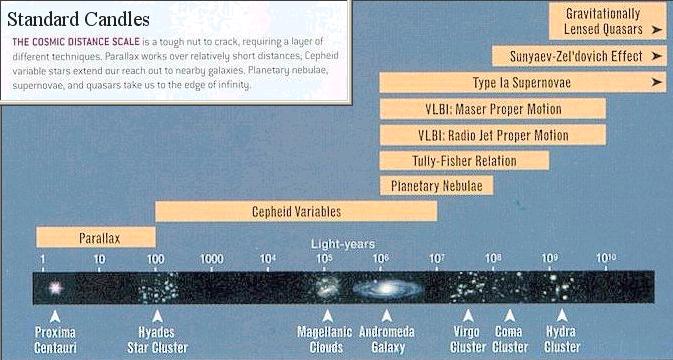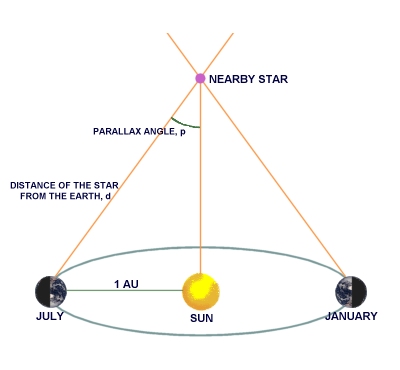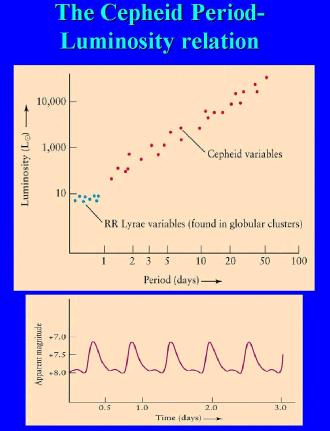
A standard candle is a class of astrophysical objects, such as supernovae or variable stars, which have known luminosity due to some characteristic quality possessed by the entire class of objects. Thus, if an extremely distant object can be identified as a standard candle then the absolute magnitude M (luminosity) of that object is known. Knowing the absolute magnitude, the distance D (in cm) can be calculated from the apparent magnitude m as shown in the formula below.
m = M - 97.5 + 5xlog(D)
The absolute magnitude for the Type Ia supernoae has been calibrated to be M = -19.33 +_ 0.25 .
Figure 1 below shows the different kind of "standard Candles", including the Cepheid Variables (star), the planetary nebulae, and the Type Ia supernovae (together with other distance measuring tools).
 |
The parallax of a star is the angle subtended at the star by the radius of the Earth's orbit. Distance to the star can be computed by the formula: d = 206265/p where the distance d is in unit of a.u., and the parallax p in second of arc. The usefulness of this method is limited by the resolution of the apparent positions to a distance of about 100 light years. A parsec is the distance corresponds to a parallax of 1 sec. of arc, i.e., 1 parsec = 206265 a.u. = 3.26 light years. |
Figure 2 Parallax [view large image] |
 |
It was discovered in 1912 by the American astronomer Henrietta Leavitt that the period of the Cepheid variables depends on the star's mean absolute magnitude; the more luminous the star, the longer the period (see Figure 3). From a graph or a formula it is possible to find the absolute magnitude of a Cepheid variable if its period is known. The distance of the star can then be computed from the absolute and the apparent magnitudes. The Cepheid variables have proved extremely important for astronomy because they can be used to calculate the distance of objects far beyond the Milky Way. The same kind of relation is also applicable to the RR Lyrae stars. They are all about fifty times more luminous than the Sun, and they vary by about a magnitude in periods of between 0.2 and 1.2 days. |
Figure 3 Period-Luminosity Relation[view large image] |